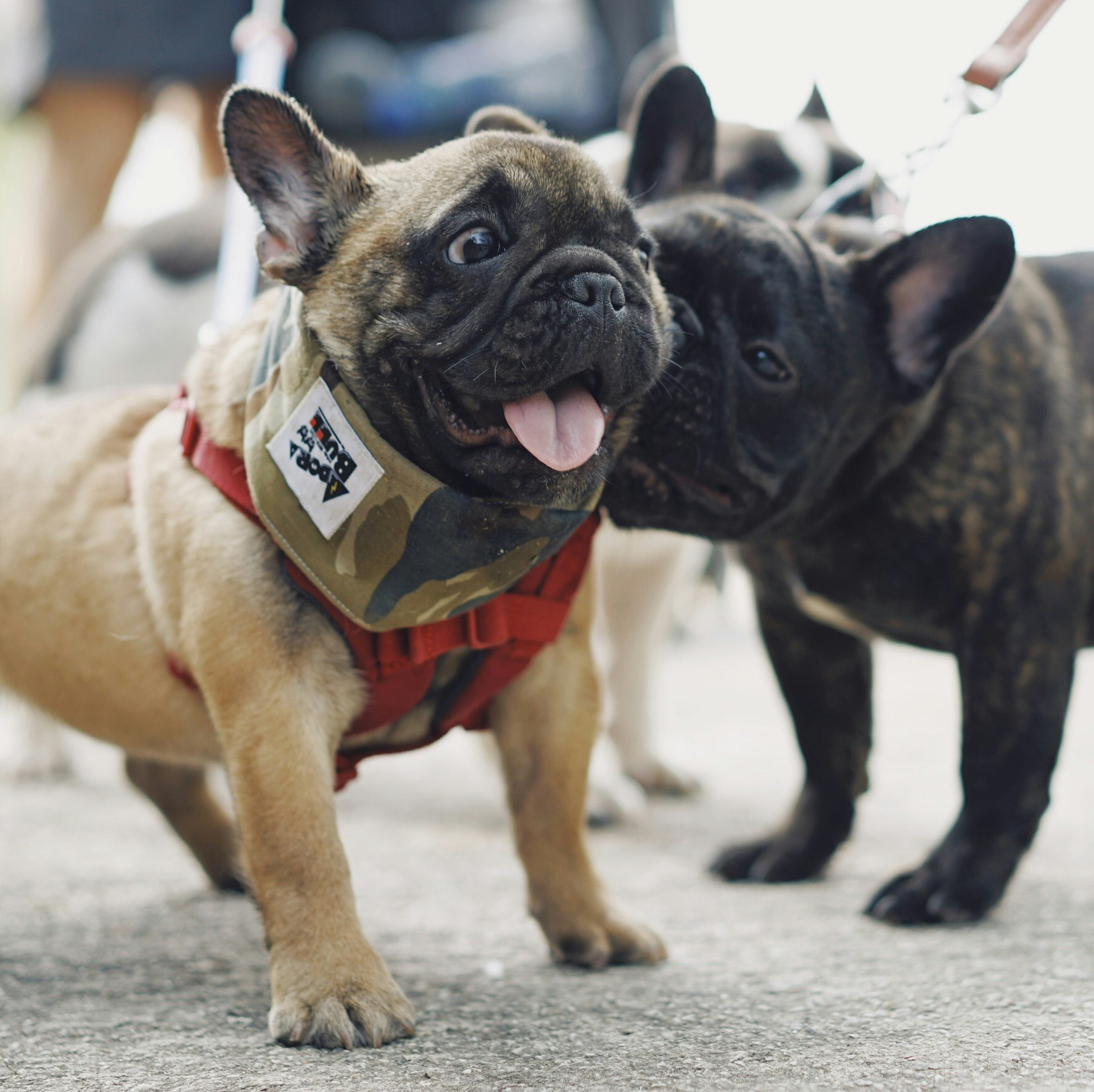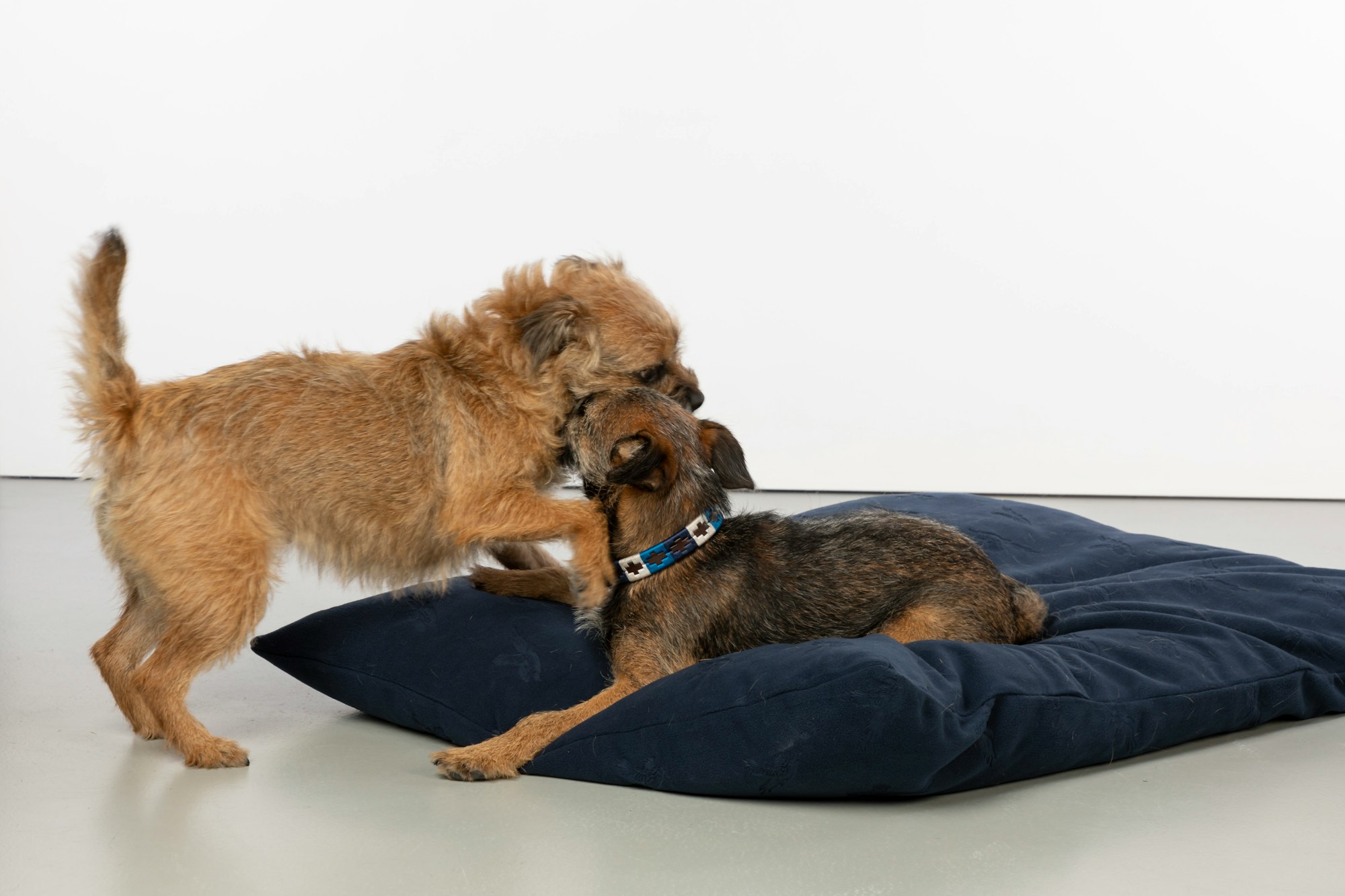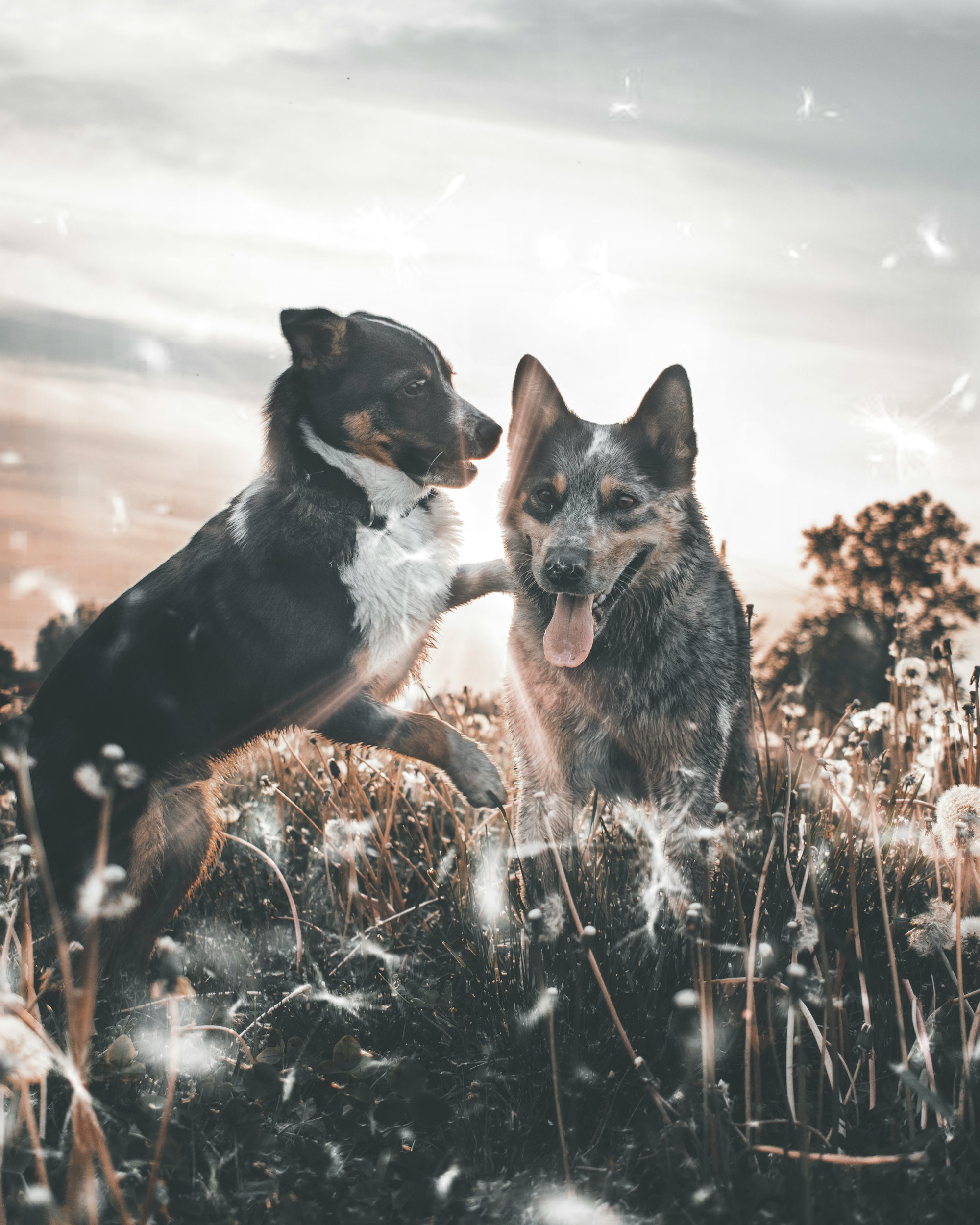When we talk about animals going into heat, we often think of female dogs. However, the question of whether male dogs go into heat is not as straightforward as it may seem. In this article, we will delve into the fascinating world of canine reproductive behavior, exploring the lesser-known aspects of male dogs' reproductive cycles.

Understanding Heat Cycles in Female Dogs
Female dogs experience what is commonly referred to as a "heat cycle" or estrus. This is a recurring reproductive phase during which a female dog becomes sexually receptive and fertile. The heat cycle is regulated by hormonal fluctuations that prepare the female body for potential mating and reproduction.
The heat cycle generally consists of four stages: proestrus, estrus, diestrus, and anestrus. During proestrus, the female dog's body begins to produce increased levels of estrogen, leading to swelling of the vulva and the release of pheromones that signal her fertility. Estrus is the peak of the cycle, marked by the highest levels of estrogen. This is when the female is most receptive to mating and can become pregnant. Diestrus follows, during which hormonal levels start to decline, and if pregnancy hasn't occurred, the body prepares for the next cycle or enters anestrus, a resting phase.
Male Dogs' Reproductive Behavior: Exploring the Mating Season
While male dogs don't undergo heat cycles like females, they do exhibit a seasonal change in reproductive behavior known as the "mating season." Unlike females, whose fertility is tied to specific cycles, males are influenced by external factors such as changing daylight lengths and hormonal changes.
The mating season is characterized by increased activity in male dogs seeking out potential mates. This behavior is largely driven by hormonal changes, primarily an increase in testosterone. As the days grow longer and environmental cues shift, male dogs often become more interested in marking their territory and displaying behaviors aimed at attracting females.
Hormonal Fluctuations in Male Dogs
Hormones play a crucial role in regulating male dogs' reproductive behavior. Testosterone, the primary male sex hormone, is responsible for driving the behaviors associated with the mating season. When the levels of testosterone rise, male dogs become more receptive to the pheromones released by females in estrus.
Territorial marking is another behavior influenced by hormonal fluctuations. Male dogs often mark their surroundings with urine to communicate their presence to potential mates and competitors. This marking behavior is particularly heightened during the mating season when males are seeking out females.
Understanding the hormonal dynamics in male dogs' reproductive behavior helps us comprehend the complex interplay between biology and environment, shedding light on the mechanisms driving their interactions with potential mates and their surroundings.
Signs That Your Male Dog Might Be in "Heat"
While male dogs don't experience heat cycles in the same way as females, certain signs might indicate their mating season or increased reproductive activity. These signs can include restlessness, heightened vocalization, and an increased interest in females in estrus. It's important to note that these behaviors are not the same as the cyclical heat experienced by female dogs but rather a response to environmental cues and hormonal changes.
Dispelling the Myth: Male Dogs vs. Female Dogs in Heat
There is a common misconception that male dogs also go into heat like their female counterparts. However, this is not accurate. Female dogs have distinct reproductive cycles marked by heat phases, while male dogs have a different pattern of reproductive behavior driven by hormonal fluctuations and environmental triggers.
The male mating season is not a "heat" in the same sense as females. Instead, it involves changes in behavior and hormonal activity that are influenced by factors such as daylight length and the presence of receptive females. By understanding the differences between male and female reproductive behaviors, we can provide better care for our furry companions.
The Role of Neutering in Male Dogs' Reproductive Behavior
Neutering, also known as castration, involves the surgical removal of a male dog's testicles. This procedure has a significant impact on male dogs' reproductive behavior. Neutering can reduce the influence of testosterone, the hormone responsible for driving mating-related behaviors.

Neutered male dogs are generally less likely to exhibit behaviors such as territorial marking, roaming in search of females, and aggression related to competition for mates. While neutering can alter some reproductive behaviors, it's important to note that individual responses may vary. Consulting with a veterinarian before deciding to neuter your male dog is advisable to make an informed decision based on your dog's specific needs and circumstances.
Managing Male Dogs' Reproductive Cycles: Tips for Pet Owners
While male dogs don't experience traditional heat cycles, their mating season can still present challenges for pet owners. To manage your male dog's reproductive behavior, consider the following tips:
- Indoor Time: During the mating season, consider keeping your male dog indoors, especially if he shows increased restlessness or interest in mating.
- Mental and Physical Stimulation: Engage your happy dog in activities that provide mental and physical stimulation, such as interactive dog toys and regular exercise, to help redirect his energy.
- Supervision: When outdoors, supervise your dog closely to prevent unwanted interactions with females in estrus.
- Positive Reinforcement: Reward desirable behaviors and provide positive reinforcement to encourage calm behavior.
- Easing fear at the vet: If you find it challenging to manage your male dog's behavior during the mating season, consult your veterinarian for guidance and potential solutions.

Comparing Male and Female Reproductive Behaviors in Canines
Male and female dogs exhibit distinct reproductive behaviors due to their differing biological roles. Female dogs have heat cycles, which are cyclical and tied to their fertility, while male dogs' reproductive behaviors are influenced by environmental cues and hormonal changes.
Male dogs' mating behaviors are triggered by external factors like increased daylight and the presence of females in estrus. In contrast, female dogs undergo a well-defined heat cycle with phases that include changes in behavior and physical signs of fertility.
Why Do Male Dogs Exhibit Changes in Behavior?

Male dogs exhibit changes in behavior primarily due to hormonal fluctuations, specifically changes in testosterone levels. These changes are designed to help them respond to the presence of receptive females and engage in mating behaviors.
The driving force behind male dogs' reproductive behavior is the need to pass on their genetic material. Hormonal shifts and environmental cues work together to ensure that male dogs are more receptive to mating during times when the likelihood of successful reproduction is optimal.
By understanding the underlying biological and evolutionary reasons for male dogs' behavioral changes, we gain insight into their instincts and behaviors that have developed over generations.
Understanding the Impact of Environment on Male Dogs' Reproductive Behavior
The environment plays a crucial role in shaping male dogs' reproductive behavior. Environmental cues, such as the presence of females in estrus and changing daylight lengths, influence the timing and intensity of their mating season.
As days grow longer and the breeding season approaches, male dogs' bodies respond to the increased daylight by producing higher levels of testosterone. This surge in hormone levels triggers behaviors associated with seeking out mates and marking territory.
Understanding the interplay between biological factors and environmental cues sheds light on the intricate balance that guides male dogs' reproductive behaviors.
Common Misconceptions About Male Dogs' Reproductive Cycles
Misconceptions abound when it comes to male dogs' reproductive cycles. One common misconception is that male dogs go into heat similar to females. This is not accurate; male dogs experience a mating season driven by hormonal changes and external triggers, while females have distinct heat cycles.
Another misconception is that neutering eliminates all mating-related behaviors in males. While neutering can reduce certain behaviors, individual responses vary. Neutered males may still display interest in females in estrus, though their behaviors may be less intense.
Clearing up these misconceptions is vital for providing accurate information to pet owners and ensuring better care for male dogs.
Male Dogs' Heat and Its Connection to Territory Marking
Male dogs' mating season is intricately linked to their instinctual behavior of territorial marking. While male dogs do not experience traditional heat cycles like females, their reproductive behavior is influenced by the presence of receptive females and changes in hormonal levels.
During the mating season, male dogs' bodies undergo hormonal changes that trigger heightened reproductive behaviors. One of these behaviors is territorial marking, where good family dogs use their urine to mark specific areas. This marking serves a dual purpose: communicating their presence to potential mates and rivals while also defining their territory.
The scent of a male dog's urine contains chemical cues that communicate information about the individual's identity, status, and readiness to mate. When male dogs sense the pheromones released by females in estrus, their instinctual response is to mark their territory more frequently and intensively.
Territorial marking not only announces a male dog's availability to potential mates but also establishes boundaries within their environment. By leaving their scent on prominent surfaces, male dogs create a presence that communicates their reproductive fitness and asserts their status among other males.
Understanding the connection between male dogs' mating behaviors and territorial marking offers insights into the intricate ways in which animals communicate, compete, and ensure successful reproduction within their natural environments.
The Science Behind Male Dogs' Attraction to Females in Heat
The attraction between male and female dogs during the mating season is backed by a fascinating scientific basis. Female dogs in estrus release pheromones—chemical signals that communicate their fertility status and availability to potential mates.
Male dogs possess a highly developed sense of smell, allowing them to detect these pheromones from a distance. When a male dog encounters the scent work of a female in heat, his brain responds by releasing chemicals that trigger mating-related behaviors. This chemical communication is an ancient and intricate dance between the sexes that has evolved to ensure successful reproduction.
Understanding the science behind this attraction sheds light on the remarkable ways in which animals communicate and respond to the cues of reproduction in the natural world.
When to Consult a Veterinarian: Unusual Reproductive Behavior in Male Dogs
While male dogs' mating behavior during their season is natural, there are instances when unusual behaviors warrant a visit to the veterinarian. If your male dog's behavior becomes excessively aggressive, anxious, or distressed during the mating season, it may indicate underlying health issues or heightened stress levels.

A veterinarian can perform a thorough examination to rule out any medical concerns contributing to the behavior. Additionally, they can offer guidance on managing your dog's behavior during this time and recommend behavioral interventions if needed.
By being attuned to your male dog's behavior and seeking professional advice when necessary, you can ensure his overall well-being and address any potential health or behavior-related issues promptly.
Conclusion
In the intricate world of canine reproductive behavior, the question of whether male dogs go into heat is met with a fascinating array of insights. While male dogs don't experience the cyclical heat cycles that females do, they possess their unique mating season influenced by hormonal fluctuations and environmental cues. Understanding the complexities of male dogs' reproductive behavior enriches our appreciation for the diverse ways in which nature orchestrates the continuation of life.
FAQs
Q1: Can male dogs experience a heat cycle like females?
- No, male dogs do not have heat cycles like females. Their reproductive behavior is driven by hormonal changes and external factors.
Q2: Do neutered male dogs go into heat?
- Neutered male dogs are less likely to exhibit mating-related behaviors, as neutering reduces the influence of reproductive hormones.
Q3: How do environmental factors affect male dogs' reproductive behavior?
- Environmental cues, such as the presence of females in estrus and daylight length, can trigger male dogs' mating behaviors.
Q4: Is scent marking related to male dogs' reproductive behavior?
- Yes, male dogs' increased territorial marking is connected to their reproductive behavior and communication with potential mates.
Q5: When should I be concerned about my male dog's mating behavior?
- If your male dog's behavior becomes excessively aggressive or distressed during the mating season, consult a veterinarian to rule out any underlying health issues.
These frequently asked questions provide additional insight into the unique reproductive behaviors of male dogs and address common concerns that pet owners may have.






